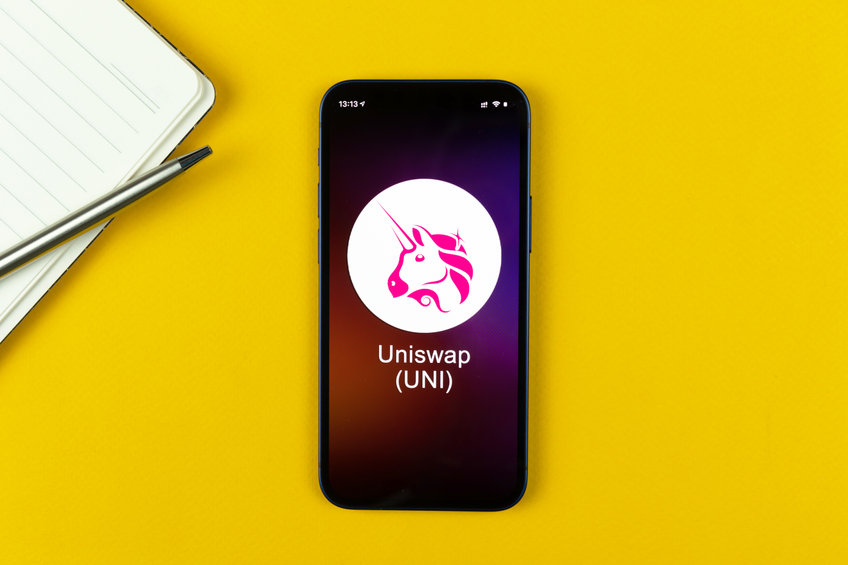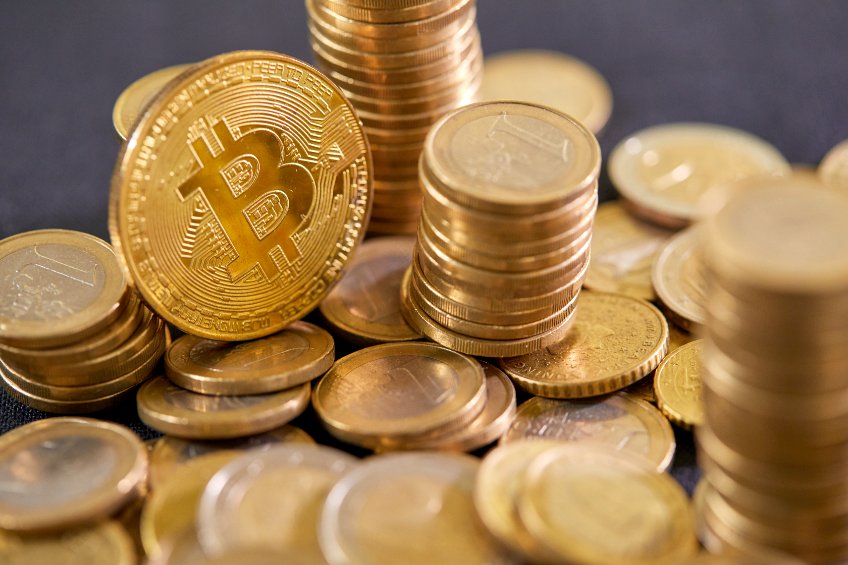
Do Kwon behauptet in den sozialen Medien weiterhin steif und fest, dass er sich nicht auf der Flucht befindet.

Finanzmittel Info + Krypto + Geld + Gold
Krypto minen, NFT minten, Gold schürfen und Geld drucken

Do Kwon behauptet in den sozialen Medien weiterhin steif und fest, dass er sich nicht auf der Flucht befindet.

Harmony ONE price has been in a strong bearish trend in the past few months. It dropped to a low of $0.016, which was the lowest level since February 2021. It has fallen by more than 94% from the highest level, making it one of the worst performers in the industry.
Harmony is a blockchain project that hopes to help developers build fast decentralized applications (dApps). Apps in its ecosystem complete transactions in less than 3 seconds. Some of the top applications in its ecosystem are SushiSwap, Tranquil Finance, and Synapse among others.
Harmony was one of the biggest projects in the blockchain industry. This changed a few months ago afer the giant hack that led to a loss worth over $100 million. According to US investigators, the Horizon Bridge hack was instigated by North Korean hackers.
As a result, the total value locked (TVL) in the network crashed from an all-time high of over $1.3 billion to less than $30 million. This explains why ONE price has crashed in the past few months. Indeed, only 5 applications in its ecosystem have a TVL of over $1 million.
Harmony has been working on how to fix the network after the hack. In a statement, the developers announced that they had decided not to mint tokens to compensate those who lost their funds. They said:
“We propose not minting more ONE tokens nor changing our tokenomics with a hard fork of the protocol. Instead, we propose deploying our treasury towards both recovery and development.”
Still, from a fundamental perspective, Harmony has a long way to go to regain its trust among developers and investors.

The daily chart shows that Harmony has been in a strong bearish trend in the past few months. It has managed to move below the 25-day and 50-day moving averages. Its volume has crashed as demand remains much lower. The MACD has moved to the neutral level.
ONE price has also formed what looks like a head and shoulders pattern. Therefore, the coin will likely have a bearish breakout in the coming weeks. If this happens, the next key support level to watch will be at $0.015.
The post Harmony price prediction: Is ONE a safe coin to buy? appeared first on CoinJournal.

Uniswap price bounced back on Tuesday as investors moved back to blue-chip DeFi projects. UNI, the platform’s token, rose to a high of $6.61, which was the highest level since September 13. It has risen by more than 30% from the lowest level this week.
Uniswap is a leading blockchain project that seeks to become the biggest decentralized exchange (DEX) in the world. In the past few years, it has handled over $1.1 trillion worth of transactions and processed over 111 million transactions.
In addition, Uniswap has built a protocol that makes it possible for developers to build decentralized apps in the finance industry. Some of the top applications in its ecosystem are Endaoment, TrustWallet, Universe Finance, and Token Terminal among others.
Uniswap’s UNI token is rising on Tuesday as other cryptocurrency prices rebound. Bitcoin surged back to $20,000 while Ethereum, BNB, XRP, and Solana rose. According to CoinMarketCap, the total market cap of all cryptocurrencies jumped to over $972 million. Historically, cryptocurrencies tend to move in sync.
Uniswap price also rose as the total value locked (TVL) in the ecosystem tilted upwards. According to DeFi Llama, Uniswap has a TVL of over $5.3 billion, making it the fifth biggest DeFi platform in the world. Still, this TVL is much lower than its all-time high of over $10 billion. In terms of trading volume, it is the biggest DEX, far bigger than PancakeSwap.
Uniswap price has also risen recently as the developers make plans to disrupt leading centralized companies like Coinbase and Binance. Speaking at the recent Messari’s Mainnet event, the company’s COO said that it was eying several new products to boost its market share. For example, the firm intends to become a leading player in the NFT industry.

The daily chart shows that UNI price has been in a consolidation phase in the past few days. The coin has moved above the 25-day and 50-day moving averages. The MACD has also moved slightly below the neutral level.
This price is slightly below the descending trendline shown in black. Therefore, there is a likelihood that the coin will have a bullish breakout as buyers target the next key resistance level at $10. A move below the support level at $5.25 will invalidate the bullish view.
The post Uniswap price prediction: UNI is ripe for a bullish breakout appeared first on CoinJournal.

Decentralised crypto platform Phuture has formally introduced its first yield earning offering via the recently announced ‘Saving Vault’ product.
The first crypto asset on offer is USDC Savings Vault, or “USV”, the DeFi protocol’s first Savings Vault that will see customers earn reliable interest on their USDC holdings.
According to Phuture, the crypto savings product targets offering users a new way to generate passive income on their USDC, which will be accessible at dependable and predictable rates.
Heard the news from @decryptmedia? 🗞️$USV, our first Savings Vault, will allow users to earn dependable interest on their $USDC.📈
Powered by @NotionalFinance, the leading fixed rate borrowing protocol, $USV is the smart way to put your money to work.https://t.co/MwJfVyL4e0
— Phuture Finance 🐳| Exposure to crypto, simplified (@phuture_finance) September 27, 2022
The USV will be powered by Notional Finance, an Ethereum-based protocol that offers a platform where users can borrow or lend crypto assets at a fixed rate.
Commenting on the product and the partnership with Phuture, Notional CEO Teddy Woodward noted:
“Interest rates in crypto can swing wildly. Notional’s focus is to bring fixed-rate opportunities from tradfi to DeFi so users can plan for the future and depend on predictable rates. We’re proud to partner with Phuture to provide their users an even simpler way to access Notional’s fixed rate yields.”
The vault will leverage smart contracts to offer an automated yield generating product. Users can access this product via the Phuture app, with equivalent vault shares allocated to represent the USDC deposits.
The post DeFi protocol Phuture launches USDC earn product appeared first on CoinJournal.

As Bitcoin adoption has steadily increased, attention has turned towards what companies are holding it on their balance sheets. Thrown into the mainstream by Tesla’s high-profile purchase last year, a slow but steady stream of companies have bought Bitcoin in the hopes it will appreciate long-term, as well as provide diversification benefits.
We wanted to assess which public companies hold the most Bitcoin, so we jumped into the data.
Look up MicroStrategy on Wikipedia and you will see the description of the company as “business intelligence, mobile software and cloud-based services”.
In reality, they are a Bitcoin holding company.
Pulling up their balance sheet, their revenue last year was $510 million. Meanwhile, they currently hold five times that value – $2.5 billion – on their balance sheet in the form of Bitcoin, following yet another purchase this week of 301 bitcoins.
Co-founder Michael Saylor is the man driving the vision, and his thoughts on Bitcoin sometimes verge on religious worship.
“Bitcoin is a swarm of cyber hornets serving the goddess of wisdom, feeding on the fire of truth, exponentially growing ever smarter, faster, and stronger behind a wall of encrypted energy”.
Galaxy Digital Holdings come in next in the standings, although with holdings worth only $750 million, their stake is three times smaller than MicroStrategy.
It makes sense for the financial services company to have a lot of Bitcoin – it specialises in digital assets meaning, unlike MicroStrategy, its business is connected to the world’s biggest cryptocurrency.
In third place is Voyager Digital with $232 million of Bitcoin.
Perhaps Voyager, more than any other, symbolises quite how bad markets have been this year for Bitcoin. The crypto lender filed for bankruptcy protection in July after the contagion crisis led a wave of withdrawals which it didn’t have enough liquidity on hand to honour.
Tesla shocked the market when it bought a big bag of Bitcoin, worth $1.5 billion, last year. However, they announced in quarterly filings earlier this year that they sold 75% of this amount and currently their stack is worth only $200 million.
This constitutes only about 0.05% of the total supply, the move to sell originally being driven by environmental concerns around Bitcoin mining, which is obviously close to the bone for the electric-vehicle carmaker.
For what it’s worth, Elon Musk said in March that he would not personally sell his Bitcoin (nor Ethereum or Doge). Then again, the richest man in the world says a lot of things on Twitter, I think it’s fair to say.
As a general principle, for those looking for advice from this thread, it is generally better to own physical things like a home or stock in companies you think make good products, than dollars when inflation is high.
I still own & won’t sell my Bitcoin, Ethereum or Doge fwiw.
— Elon Musk (@elonmusk) March 14, 2022
Some critics point toward a large amount of Bitcoin’s capped supply being held by a small number of wallets. The concern is that these wallets could have an undue impact on the network as a result.
Looking at public companies, this concern does not appear significant outside of MicroStrategy’s 0.62% stake.
Interestingly, looking at private companies, there are some large known wallets. The most notorious is Mt Gox, holding 141,686 bitcoins, translating to 0.675% of total supply – some of which will be distributed to customers who were hacked in the infamous scandal years ago, following the conclusion of long-running court proceedings.
However, Block.one, the firm behind the cryptocurrency EOS, holds 140,000 bitcoins – larger than even MicroStrategy’s holdings and just behind Mt. Gox. IOnterestingly, there is not as much chatter about the company’s massive reserves compared to the other whales on this list.
The graph below puts together both public and private companies’ holdings.
Their staggering amount of Block.One’s holdings constitute about 0.67% of the total supply of Bitcoin.
In conclusion, MicroStrategy is the runaway leader in terms of Bitcoin holdings amongst public companies, but when compared to private companies too – it’s Block.one that is leading the charge.
But none come close to the over 1 million Bitcoins and >5% of supply that sits across Satoshi Nakamoto’s wallets.
https://buybitcoinworldwide.com/treasuries/#public
The post Microstrategy hold almost 1% of all Bitcoins, more than all public companies combined appeared first on CoinJournal.